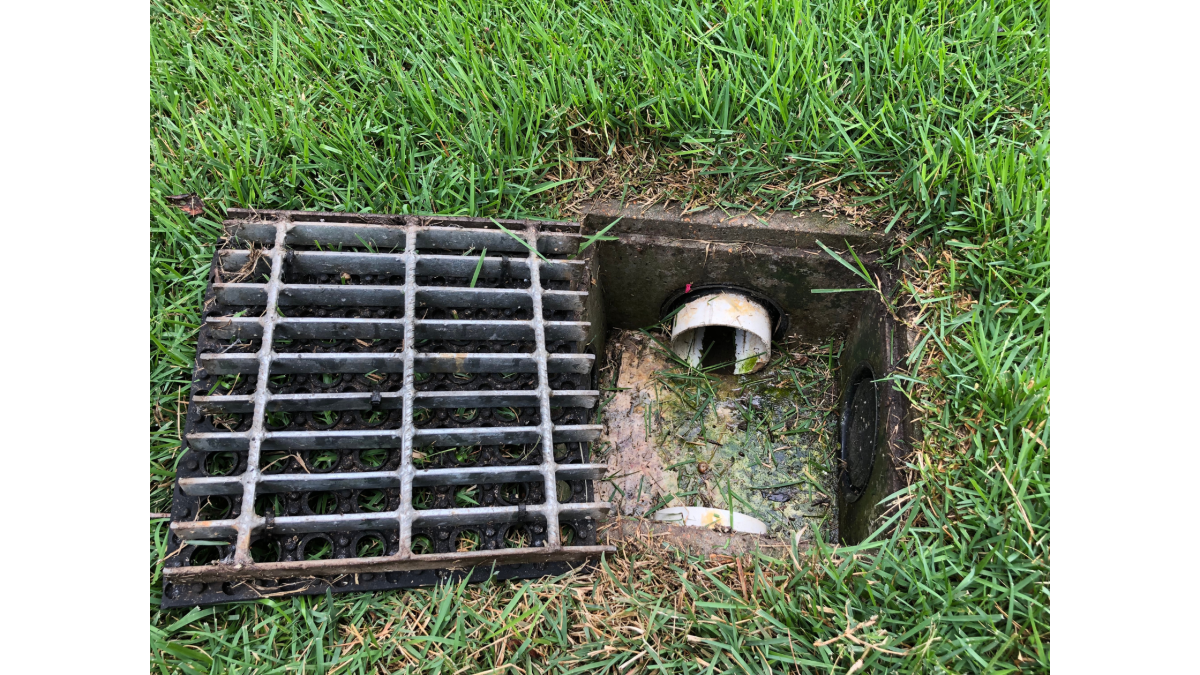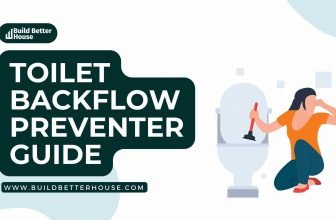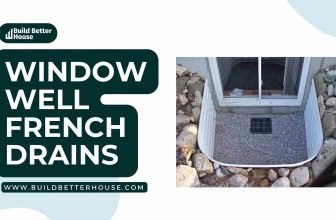French Drain Mistakes: Common Errors and Solutions

French drains are an effective solution for diverting water away from your property and preventing potential damage to your home’s foundation. These simple yet powerful drainage systems consist of gravel-filled trenches with embedded pipes designed to capture and redirect excess water. However, installing a French drain can be a complex process, and making mistakes during installation can lead to problems such as premature failure, slow drainage, or clogging of the system.
Understanding the common mistakes made when installing a French drain can make all the difference in the effectiveness and longevity of your drainage solution. Ensuring you use the right type of gravel, properly lining the trench, and adhering to best practices for installation are just a few of the essential elements to pay attention to while planning and carrying out your French drain project. By avoiding common pitfalls, not only will you save time and money in the long run, but also ensure that your home stays safe from flooding and basement issues.
Key Takeaways
- French drains can effectively divert water away from your property when installed correctly
- Proper materials and trench lining are essential for the success and longevity of your French drain
- Familiarizing yourself with best practices in installation and maintenance will help minimize future issues with your drainage system
Basics of French Drain

A French drain is a simple yet effective drainage solution designed to divert excess water away from your property. It consists of a trench filled with gravel and perforated pipe, which allows water to be collected and redirected. To ensure the proper functioning of your French drain, you need to be aware of common mistakes and know how to avoid them.
When installing a French drain, one of the most crucial elements is using the right materials. Be sure to use round natural stones for the fill material, as they provide better accessibility and drainage. A riverbed is often an excellent source of these stones, which have been rounded by flowing water.
It’s important to choose the right exit point for your French drain. This will prevent water from collecting in unwanted areas, causing issues like soil erosion or foundation damage. Be sure that the exit point is not too close to your building foundation or neighboring properties, and ensure it follows any local zoning regulations.
To allow water to flow freely through your French drain, it must have a proper slope. Descending at a rate of 1% is ideal, which is equivalent to a 1-foot drop for every 100 feet of drain. If your property has a natural slope, it is even better, as long as it provides adequate drainage. If the slope is insufficient, water will not flow correctly, and your French drain will not be as effective.
Another essential aspect is using the right landscape fabric. This will prevent dirt, roots, and other debris from entering the pipe, which can lead to clogs and decreased efficiency. Opt for a high-quality, permeable landscape fabric when constructing your French drain.
Lastly, remember to call before you dig. Failing to do this can result in damaging underground utilities and even legal consequences. Always check with your local authorities and utility companies to locate any underground lines before starting your project.
By understanding the basics of French drains and being mindful of these common mistakes, you will be better equipped to create an effective drainage solution that keeps your property dry.
Common French Drain Mistakes
Improper Slope
One common mistake when installing a French drain is not considering the slope required for effective water flow. Your French drain needs a slope, typically around 1% (a 1-foot drop for every 100 feet of drain) for optimal performance. Failing to establish the proper slope can cause water stagnation and inadequate drainage.
Incorrect Gravel and Pipe Choices
Selecting the wrong gravel and pipe materials for your French drain can lead to poor functionality and early failure. The ideal gravel is crushed rock with a diameter of 1 to 2 inches, allowing for optimal subsurface water flow. Avoid using pea gravel or other small-sized gravel. As for the pipe, choose one with small perforations, like a solid PVC pipe, which will prevent clogs while allowing water to enter.
Poor Drainpipe Placement
Proper placement of the drainpipe within the excavated trench is crucial for the effectiveness of your French drain. Placing the drainpipe too high may cause standing water in the trench, while placing it too low might result in inadequate water collection. Make sure your pipe is positioned to encourage the appropriate direction of water flow. Additionally, avoid placing the drainpipe too close to downspouts without proper connections to prevent erosive water flow.
Inadequate Landscape Fabric
Failing to use high-quality landscape fabric, such as non-woven geotextile fabric, can lead to clogs and decreased French drain lifespan. A good landscape fabric should wrap the entire trench, including the gravel and pipe. This allows for proper water filtration while keeping soil and debris from contaminating the drain system.
Ignoring Zoning Regulations and Utilities
Before installing your French drain, it’s essential to research your local building authority’s zoning regulations. Ignoring these regulations can lead to fines and potential legal issues. Additionally, consult your local utility companies to ensure that your excavation doesn’t interfere with underground utility lines. Always exercise caution when digging to avoid damage to your property or nearby utilities.
By paying careful attention to these common mistakes, you can ensure the successful installation and maintenance of your French drain, effectively managing landscape drainage and keeping your property free from water-related problems.
Avoiding Flooding and Basement Issues
Proper Foundation Drainage
To prevent flooding and basement issues, it’s crucial to ensure proper foundation drainage. One of the key steps in this process is the installation of a French drain. Make sure the French drain is placed at the correct depth and distance from your foundation, as well as using round natural stones instead of crushed stones to prevent clogging. Take into account the direction of water flow, since a properly installed French drain should collect and redirect water away from your foundation. Be aware of any roots in the installation area, as they may cause drainage problems over time. If necessary, consult an engineer to evaluate your drainage system and foundation.
Catch Basins and Downspout Drains
In addition to the French drain, catch basins and downspout drains play a significant role in preventing flooding and basement issues. These are designed to collect heavy water flow from gutters and redirect it away from your foundation. Make sure to maintain these components, keeping them clear of debris and adjusting their position when needed. Ensure the downspouts discharge water at least 10 feet away from your home’s foundation and consider extending them if necessary.
Sump Pumps and Pooling Water
Sump pumps can be a valuable addition to your foundation drainage system, especially if your home is located in an area with a high water table or prone to heavy water flow. These pumps work by collecting water that accumulates in a sump basin and pumping it away from your home. Inspect and maintain your sump pump regularly to ensure it is working efficiently and effectively.
Pooling water near your foundation can be a sign of drainage problems. Investigate the cause of this issue, paying attention to possible low spots in your yard and the drainage system’s design. Sometimes, the solution might involve extra drainage measures or filling in low spots.
By carefully considering and implementing proper foundation drainage measures, catch basins, downspout drains, and sump pumps, you can effectively protect your home from flooding and basement issues.
Best Practices for French Drain Installation
Selecting the Right Materials
When installing a French drain, selecting the right materials is crucial for its effectiveness. Use crushed stone or drainage rock to fill the trench and surround the perforated pipe. Avoid using small pea gravel or natural stones, as they may lead to slow drainage or clogging.
The use of a perforated pipe is essential for proper water flow. Ensure it is of appropriate length and diameter, and consult with contractors if necessary. Additionally, consider using both woven and non-woven geotextile fabric options as lining materials. Woven fabric is more durable but may be less permeable to water, while non-woven fabric allows for superior water flow.
Lining the Trench and Pipe Holes
The process of lining the trench plays a vital role in the functionality of your French drain. Start by using drainage fabric or landscape fabric to line the trench’s bottom and sides. This filter fabric will help prevent dirt and debris from clogging the system as water seeps into the drain.
When setting the perforated pipe into place, make sure the pipe holes face downwards. This allows water to enter the pipe from the bottom, helping prevent sediment from infiltrating and possibly clogging the drain.
Ensuring Proper Water Diversion
Properly diverting surface water away from your property is essential for an effective French drain. Start by digging the trench with a slope of one inch per 8-10 feet of length to create an incline for water flow. Make sure water is being diverted away from your home, and not pooling or causing issues elsewhere on your property.
Additionally, verify that the end of your French drain is in an area with appropriate drainage, such as a dry well or a low spot on your property. This will help ensure surface water is effectively removed from the area and prevent problems due to improper water diversion.
Repairs and Maintenance
Common French Drain Repair Issues
When dealing with French drain repairs, it’s important to be aware of common issues that can arise. Some of these issues include:
- Clogged or blocked pipes: Over time, debris and sediment can build up, causing the water to flow slower or even stop completely. Regular cleaning and maintenance can help prevent this.
- Incorrectly installed drain rock: Using the wrong type of drain rock can result in poor drainage and may even cause the system to clog. Make sure to use the proper drain rock, such as a clean natural round stone (1-1/2″ clean round rock is a great choice when available).
- Landscaping and zoning regulations: Be mindful of your local zoning regulations when installing or repairing a French drain. Incorrect landscaping can potentially damage the drain or even violate local regulations.
To help prevent these common issues, regular inspection and maintenance of your French drain system is essential. This will ensure proper water drainage and protect your property from water damage.
Professional Inspection and Assistance
While there are many blog posts and DIY resources available on French drain repairs, it is highly recommended to consult with a professional when dealing with more complex issues. Professionals have the experience and knowledge to assist with repairs that are beyond your skillset. Some key considerations when seeking professional help are:
- Sewer lines: Be aware of your sewer lines’ location, as they can often intersect with your French drain system. A professional will be able to identify these intersections and ensure that the repairs are conducted appropriately.
- Downspout drain: Professionals can help ensure that your downspout drain is working efficiently with your French drain system and is properly connected to prevent further issues.
- Inspection: A professional inspection will ensure that your French drain system is functioning at its optimal level. Any potential problems can be identified, and the necessary repairs can be conducted to maintain the drain’s effectiveness.
In conclusion, understanding the common French drain repair issues and seeking professional inspection and assistance when needed can significantly reduce the likelihood of damage to your property. Regular maintenance and proper care will ensure your French drain functions effectively, protecting your home from water damage.
Legal and Safety Considerations
When installing a French drain, it’s essential to consider legal and safety aspects to ensure proper functionality and avoid potential complications. This section will discuss the importance of consulting building authorities and engineers, as well as avoiding underground utility lines during your French drain installation process.
Consulting Building Authorities and Engineers
Before you begin installing your French drain, it’s crucial to consult with your local building authorities. Zoning regulations can affect the placement and function of your French drain, and failure to comply with these regulations may result in fines, legal troubles, or damage to neighboring properties. By consulting with building authorities, you can:
- Obtain necessary permits and approvals
- Ensure your French drain does not harm public areas or other property
- Avoid contamination risks to local water supplies
Additionally, working with licensed engineers can help you design a French drain system that functions properly, meets safety standards, and complies with regulations. Engineers can assist with:
- Determining the correct slope and exit points for your French drain
- Identifying appropriate materials and installation techniques
- Addressing potential complications such as dips or uneven terrain
Avoiding Underground Utility Lines
During the installation process, it’s essential to be mindful of underground utility lines near your French drain site. Accidentally damaging these lines can result in:
- Safety hazards, such as gas leaks or electrical shock
- Service disruptions for you and your neighbors
- Costly repairs and fines from utility companies
To avoid these issues, follow these steps:
- Call your local utility notification center before you begin digging. They will mark underground utility lines on your property, so you know where to avoid digging.
- Use caution when digging near marked lines, even if you believe you are safely above or below the indicated utility.
- If you encounter an unmarked utility line, stop work immediately and contact the appropriate utility company or your local notification center.
By taking these safety and legal precautions, you can ensure a successful and risk-free French drain installation.
Frequently Asked Questions
What are common mistakes when installing a French drain?
Some common mistakes you should avoid when installing a French drain include:
* Not calling before you dig: Forgetting to check for underground utilities.
* Ignoring the direction of water flow: Always ensure that water moves away from your foundation.
* Installing a French drain when there are better alternatives for your situation.
* Not accounting for soil type, slope, and characteristics.
How important is the choice of fabric for a French drain?
Choosing the right fabric is crucial for a successful French drain installation. A quality geotextile fabric helps prevent clogging from silt and debris. It separates your drainage gravel from the surrounding soil while still allowing water to pass through efficiently.
What are the best practices for French drain exit points?
Best practices for French drain exit points include:
* Ensuring the exit point is at a lower elevation than the starting point.
* Locating the exit point in an area where water can safely discharge without causing erosion or damage to surrounding property.
* Installing a pop-up emitter or a catch basin to help control water discharge if necessary.
How do you choose the right gravel for a French drain?
When choosing gravel for a French drain, opt for round natural stones, like those sourced from riverbeds. These stones allow for greater material flow and ensure proper drainage. The recommended size for French drain gravel is typically 3/4 to 1-1/2 inches.
What are the advantages of a pipeless French drain?
A pipeless French drain, also known as an infiltration trench, allows water to drain directly into the surrounding soil. Advantages include:
* Lower cost due to not requiring perforated pipes
* Less maintenance since there are no pipes that can clog or collapse
* Greater adaptability to specific site conditions
However, pipeless French drains may not be suitable for every situation, particularly in areas with heavy clay soils or tight spaces.
When is it not recommended to use a French drain?
French drains are not recommended when:
* The slope is too steep or too flat
* There are better alternative drainage solutions for your specific situation
* Your soil type is predominantly clay, which can clog a French drain and limit its effectiveness
* You have a high water table, as it could cause water to infiltrate back into the drain






